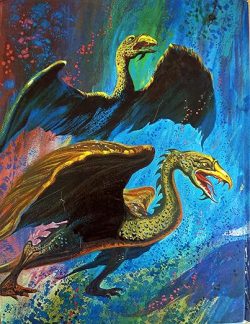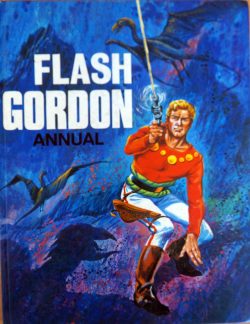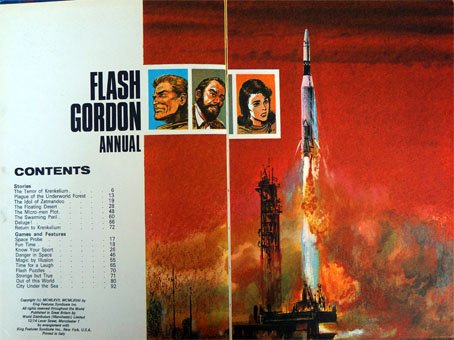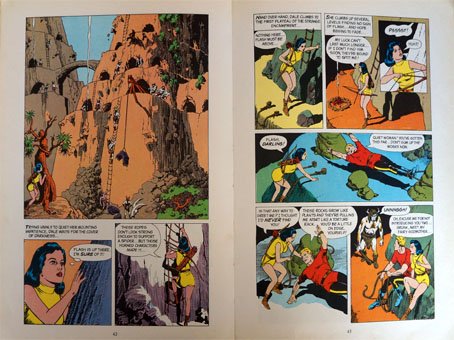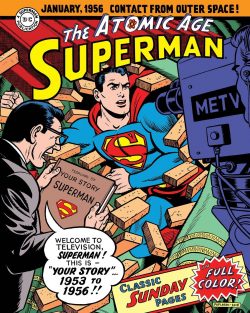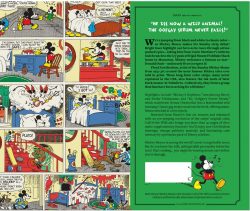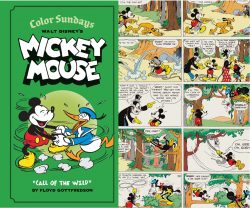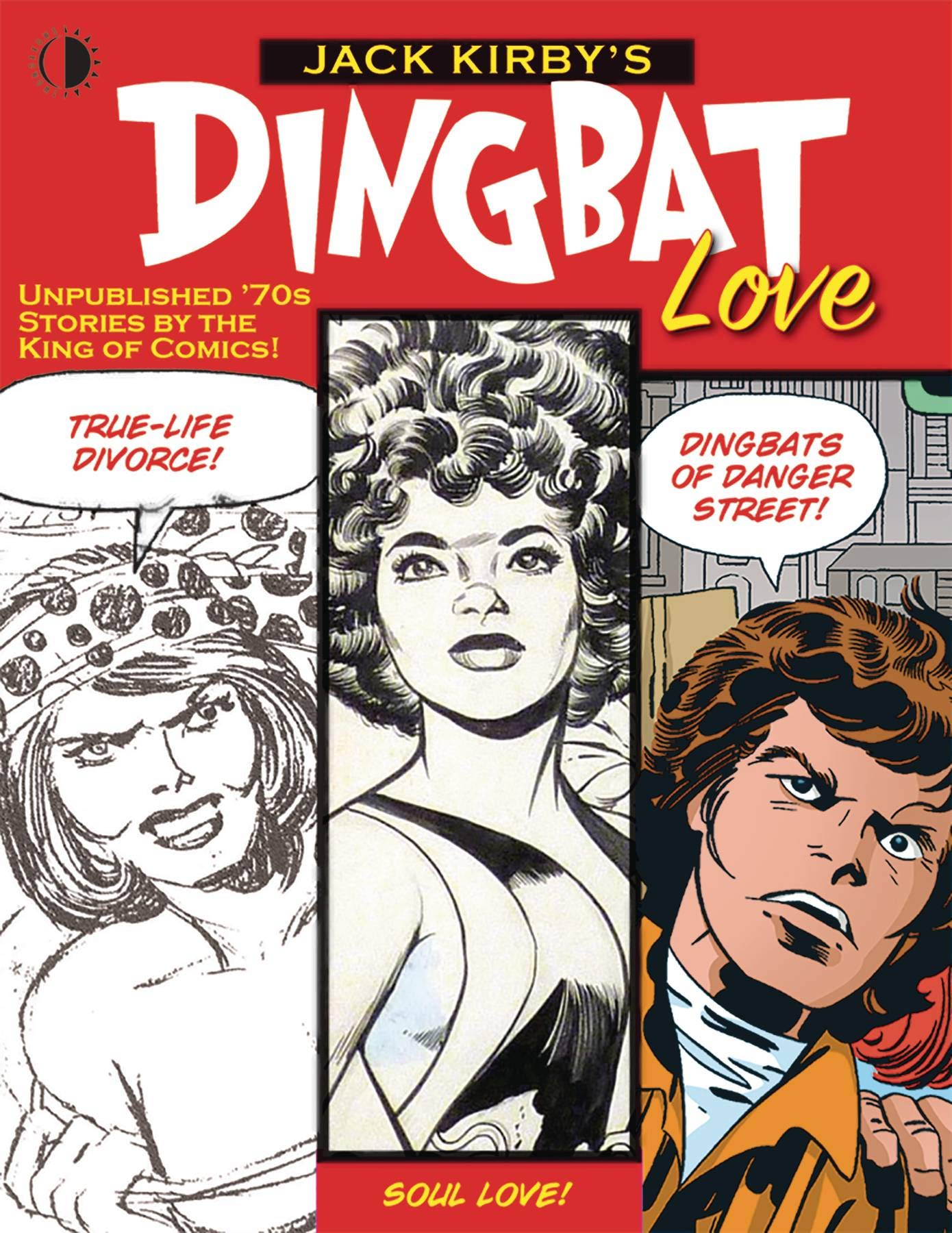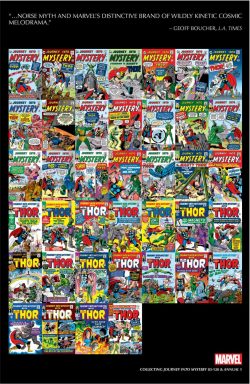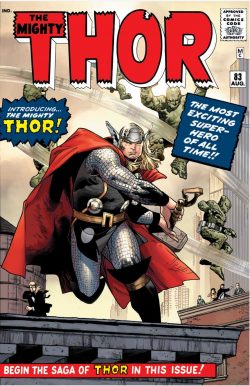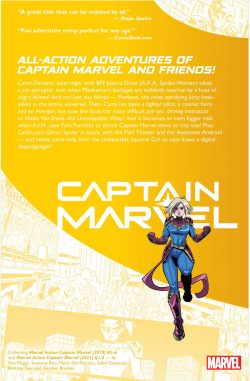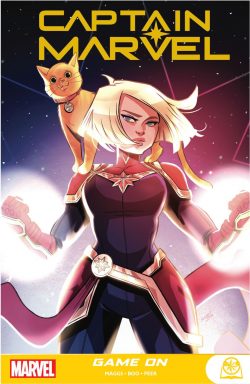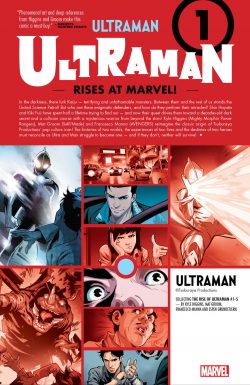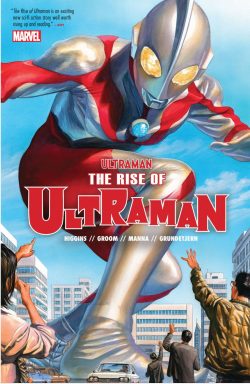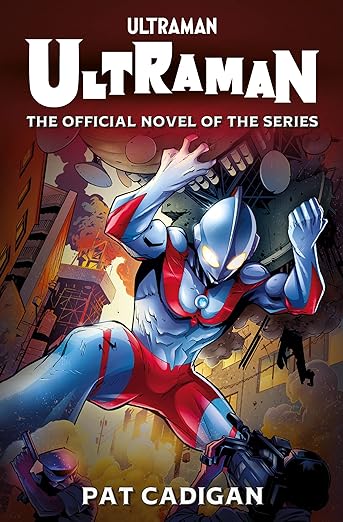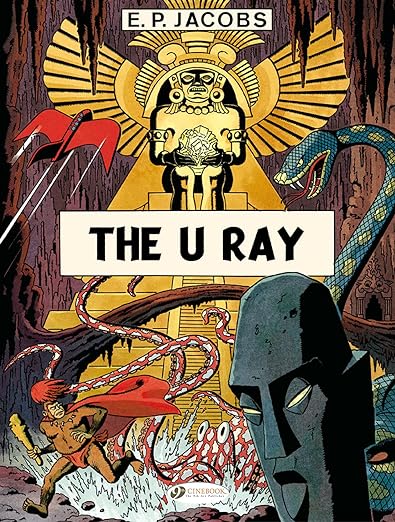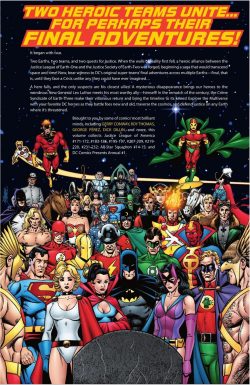
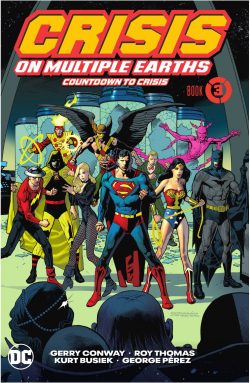
By Gerry Conway, Roy Thomas, Kurt Busiek, George Pérez, Marv Wolfman, Dick Dillin, Don Heck, Adrian Gonzales, Chuck Patton, Keith Pollard, Rich Buckler, Alan Kupperberg, Jerry Ordway & various (DC Comics)
ISBN: 978-1-7795-2176-7 (TPB/Digital edition)
Win’s Christmas Gift Recommendation: Unmissable Family Get-togethers… 9/10
As I’ve incessantly mentioned, I was a “Baby Boomer” raised on Julie Schwartz, Gardner Fox and John Broome’s gradual reintroduction of Golden Age superheroes during the halcyon, eternal summery days of the early 1960s. To me, those fascinating counterpart crusaders from Earth-Two weren’t vaguely distant memories rubber-stamped by parents or older brothers – they were cool, fascinating and enigmatically new. And for some reason the “proper” heroes of Earth-One held them in high regard and treated them with obvious deference…
The transcendent wonderment began in The Flash: pioneering trendsetter of the Silver Age Comics Revolution. Showcase Editor Julie Schwartz ushered in a new age with his landmark successes – which also included Adam Strange, Green Lantern, The Atom and (in The Brave and the Bold) Hawkman – directly leading to the invention of the Justice League. That in turn inspired the Fantastic Four and Marvel’s entire empire – changing forever the way comics were made and read…
Whereas the 1940s were about magic and macho, the Silver Age polished everything with a thick veneer of SCIENCE and a wave of implausibly rationalistic concepts which filtered into the dawning mass-consciousness of my generation. The most intriguing and ultimately rewarding was, of course, the notion of parallel worlds. After triumphantly ushering in the return of superheroes, the Scarlet Speedster – with Fox & Broome writing – set an unbelievably high standard for costumed adventure in sharp, witty tales of science and imagination, illustrated with captivating style and refined simplicity by Carmine Infantino.
The epochal epic that changed American comics forever was Fox’s ‘Flash of Two Worlds’ (Flash #123 September 1961, reprinted in many places, but not here): introducing to an emerging continuity the concept of alternate Earths and, the multiversal structure of the future DCU, as well as all successive cosmos-shaking yearly Crises sagas that grew from it.
… And again, where DC led, others followed…
Received with tumultuous acclaim, the notion was revisited in Flash #129 which teasingly reintroduced evergreen stalwarts – Wonder Woman, Hawkman, Green Lantern, The Atom, Doctor Mid-Nite and Black Canary: venerable members of the Justice Society of America. Clearly Editor Schwartz had something in mind…
The tale led to the elder team’s first meeting with the Justice League of America and start of an annual tradition. When ‘Flash of Two Worlds’ brought us the notion of Infinite Earths and alternate iterations of costumed crusaders, fans began agitating for the return of the Greats of the Golden Age. Editorial powers-that-be were hesitant, fearing too many heroes would be silly and unmanageable, or worse yet, put readers off. If they could see us now…
These innovative adventures generated an avalanche of popular and critical approval (big sales figures, too) so inevitably the trans-dimensional tests led to the ultimate team-up in the summer of 1963. Once DC’s Silver Age heroes began regularly meeting their Golden Age predecessors from “Earth-Two”, a yearly tradition commenced and every summer (ish) the JLA would team-up with the JSA to combat a trans-dimensional threat. This gloriously enthralling volume celebrating Infinite Diversity in Infinite Costumes gathers the last combinations and summer double-headers starring the JLA & JSA and includes another outreach team-up designed to set young hearts racing and pulses pounding.
Encompassing October 1979 – November 1984, Justice League of America #171-172, 183-185, 195-197, 207-209, 219-220, 231-232, All-Star Squadron #14-15 and DC Comics Presents Annual #1 cover a transitional period as DC prepared for its 50th anniversary by planning to destroy everything they had built in Crisis on Infinite Earths. The collection opens with a locked-room mystery by Gerry Conway, Dick Dillin & Frank McLaughlin as ‘The Murderer Among Us: Crisis Above Earth One!’ sees the League feting the Society in their satellite HQ and horrified to find one of their veteran guests throttled by unseen hands.
With no possible egress or exit, the greatest detectives of two worlds realise one of their heroic complement must be the cold-blooded killer and a methodical elimination of suspects leads to tense explorations and explosive repercussions in the revelatory finale ‘I Accuse…’
With the next summer’s team-up an artistic era ended as criminally underappreciated illustrator Dick Dillin passed away whilst drawing the saga. He and McLaughlin only completed Conway’s first chapter – ‘Crisis on New Genesis or, Where Have All the New Gods Gone?’ – leaving up-and-coming star George Pérez to fill some very big boots (and gloves and capes and…).
An epic confrontation between JLA, JSA and futuristic deities of Jack Kirby’s astounding Fourth World in #183-185 (October-December 1980) begins with the assembled heroes unilaterally shanghaied out of the regular universe and transported to transdimensional paradise planet New Genesis. That world is utterly deserted but for a furiously deranged warrior Orion who seems set on crushing them all. Happily, he is stopped by late-arriving Mister Miracle, Big Barda, Oberon and Metron who reveal their fellow gods have been captured and sent to hell-world Apokolips by three Earth-2 villains. The world has been in turmoil since Orion killed evil overlord Darkseid. In the interim the vanquished devil’s spirit travelled to Earth-Two and recruited The Shade, Icicle and Fiddler to resurrect him…
Details are reviewed in ‘Crisis Between Two Earths or, Apokolips Now!’ (Conway, Pérez & McLaughlin) as – freshly restored – Darkseid strives to make his still-tenuous existence permanent. In response, the heroes split up to stop him by hitting key components of his technology and support teams. En route they encounter a resistance movement of battle-scarred super-powered toddlers, the horrific reason New Genesisians were initially taken and even how Darkseid plans to invade the natural universe by cataclysmically warping Apokolips into the space currently occupied by Earth-Two…
The diabolical denouement reveals a ‘Crisis on Apokolips or, Darkseid Rising!’, as the scattered champions reunite to stop imminent catastrophe and set the worlds to rights in an explosive clash with no true resolution. Such is the nature of undying evil…
Issues #195-197 (October-December 1981, edited by Len Wein) offered action and intrigue in ‘Targets on Two Worlds’ (Conway, Pérez & John Beatty), as Earth-Two’s premiere mad scientist and serial body-snatcher The Ultra-Humanite gathers a coterie of villains from his own world and Earth-One into a new incarnation of the Secret Society of Super-Villains.
The wily supergenius has divined that by removing five specific Leaguers and JSA-ers from their worlds he can achieve an alteration of the Cosmic Alignment and create a world utterly devoid of all superheroes. Selling the plan to his suspicious pawns Monocle, Psycho Pirate, Brain Wave, Rag Doll, The Mist, Cheetah, Signalman, Killer Frost and Floronic Man is relatively easy. They can see the advantages and have no idea the duplicitous savant is playing them for his own ultimate advantage…
Inked by Romeo Tanghal, the plan successfully concludes in ‘Countdown to Crisis!’ as Earth-One’s Batman, Black Canary, Wonder Woman, Firestorm and Atom are ambushed with their other-world guests Flash/Jay Garrick, Hourman, Hawkman, Superman and Johnny Thunder. Despatched to an inter-dimensional void, they learn the longed-for Realignment results in a hero-free planet as the triumphant miscreants quickly fall out. Similarly banished, Earth-One’s villains spitefully retaliate by freeing the lost heroes from a ‘Crisis in Limbo!’ (illustrated by Keith Pollard, Pérez & Tanghal) and join them in crushing the Ultra-Humanite to restore the previous status quo…
DC Comics Presents Annual #1 (September 1982) then adds another crucial component of Crisis on Infinite Earths, as Marv Wolfman, Rich Buckler & Dave Hunt reintroduce the world where good and evil are transposed. ‘Crisis on Three Earths!’ sees the Supermen of Earths One & Two again thrash their respective nemeses Lex and Alexei Luthor only to have the villains flee to another universe…
In Case You Were Wondering: soon after the Silver Age brought back an army of costumed heroes, ‘Crisis on Earth-One’ (Justice League of America #21, August 1963) and ‘Crisis on Earth-Two’ (in #22) became one of the most important stories in DC history and arguably one of the most important tales in American comics. Sequel saga ‘Crisis on Earth-Three’ & ‘The Most Dangerous Earth of All!’ (JLA#29-30) reprised the team-up thrills after the super-beings of yet another alternate Earth discovered the secret of multiversal travel.
Unfortunately, Ultraman, Owlman, Superwoman, Johnny Quick and Power Ring were super-criminals The Crime Syndicate of Amerika on a world without heroes. They see the JLA and JSA as living practise dummies to sharpen their evil skills upon…
Back at the DCCP Annual, the Luthors land on Earth-3 and begin transdimensional attacks on their archenemies: even tentatively affiliating with Ultraman whilst treacherously planning to destroy all three Earths…
This potential cosmic catastrophe prompts the brilliant and noble Alex Luthor of Earth-Three to abandon his laboratory, turn himself into his world’s very first superhero and join the hard-pressed Supermen in saving humanity three times over…
That same year later – specifically October-December 1982 – the annual scenario expanded into a sprawling multi-title extravaganza: a team-up and chronal crossover encompassing Justice League of America #207-209 and WWII set All-Star Squadron #14-15. Played out across alternate universes and divergent histories, the drama commenced in Justice League #207 as ‘Crisis Times Three!’ (Conway, Don Heck & Tanghal) sees members of the JSA diverted from a trans-dimensional exchange and rendezvous with the JLA.
They are deposited on a terrifying post-apocalyptic alternate Earth where 1962’s Cuban Missile Crisis resulted in atomic war, whilst the JLA are smashed by the unexpected arrival of their evil counterparts the Crime Syndicate of Earth-Three. As the lost JSAers explore a nuclear nightmare, the story unfolds and an old enemy is exposed. This Earth was devastated due to the intervention of malign time-meddler Per Degaton…
Having barely survived the attack of the Syndicators, a team of Justice Leaguers – Superman, Zatanna, Firestorm, Hawkman and Aquaman – jump to Earth-Two and discovers a fascistic society which has been ruled by Degaton since the 1940s. Barely escaping, they then plunge back down that timeline to January 1942 to solve the mystery and stumble upon the JSA’s wartime branch: the All-Star Squadron…
After the creation of Superman and the very concept of Superheroes, arguably the next most groundbreaking idea for comic books was to stick a bunch of individual stars into a team. Thus when anthology title All Star Comics #3 revealed its previously solo line-up interacting as a comradely group, the very nature of the genre took a huge leap in evolution.
The Justice Society of America inspired innumerable similar iterations over decades but for many of us tragically nostalgia-paralysed fans, the original and genuine pioneers have always been Simply the Best.
Possibly their greatest living fan, advocate and perpetuator is writer, editor and historian Roy Thomas who has long championed – when not actually steering – their revivals and continued crusades against crime, tyranny and injustice. When he moved from Marvel to DC in the early 1980s, Thomas created Arak, Son of Thunder and Captain Carrot, wrote Batman and Wonder Woman and inevitably revived the world’s original Super-Team. Moreover, he somehow convinced DC’s powers-that-be to put them back where they truly belonged – battling for freedom and democracy in the white-hot crucible of World War II. The All-Star Squadron was comprised of minor characters owed by DC/National and All American Comics, retroactively devised as an adjunct to the main team and indulging in “untold tales” of the War period…
The action resumes in All-Star Squadron #14, courtesy of writer Thomas and illustrators Adrian Gonzales & Jerry Ordway. In ‘The Mystery Men of October!’ they are an unknown quantity to the recently arrived Leaguers in search of Degaton. Their arrival coincides with the rogue recovering his erased memories, stealing his boss’s time machine (long story: buy the book for the full details) and heading into the time stream where he encounters and liberates the Crime Sydicators from an energy-prison the heroes had created for them…
Joining forces, the murderous monsters foray forward and across the realities. Arriving in a 1962 and stealing nuclear missiles Russia had stockpiled in Cuba, they precipitate a clash of wills between President John F. Kennedy, Soviet premier Nikita Khrushchev and Fidel Castro triggering atomic Armageddon. Sadly, none of this is known to the JLA or All-Stars in 1942 who see costumed strangers and instantly attack…
That battle ends in JLA #208 after Degaton makes his ultimatum known: America and the world’s total surrender or successive detonation of dozens of atomic super explosives in many nations. Happily the heroes of two eras are ready to stifle ‘The Bomb-Blast Heard ‘Round the World’ (Conway, Heck & Sal Trapani) and deploy accordingly. They are soon joined by JSA comrades from 1982 who have escaped their dystopian dungeon dimension and headed back 40 years for the beginning of the end in A-SS #15’s all-action clash of titans ‘Masters of Worlds and Time!’ (Thomas, Gonzales & Ordway).
The senses-shattering conclusion comes in JLA #209 with Conway & Heck detailing the cautious restoration of all consensus realities in ‘Should Old Acquaintances Be Forgot…’
Thomas joined Conway scripting the penultimate pairing (JLA #219-220 October to November) with Chuck Patton, Tanghal & Pablo Marcos illustrating ‘Crisis in the Thunderbolt Dimension!’ and ‘The Doppelgänger Gambit!’
Here an attack on Earth-One by a coterie of villains from both worlds begins with the magical Thunderbolt of retired JSA stalwart Johnny Thunder inexplicably ambushing the Justice League’s biggest guns. With the heroes in comas, The Wizard, Fiddler, Felix Faust, The Icicle, Chronos and Dr. Alchemy plunder the planet as the remaining costumed champions uncover a shocking secret about Earth-Two émigré Black Canary and clash with a long-forgotten foe who can also control the electrical genie who exposes an awful secret and the hidden history of the JSA… before the good guys and – late addition Sargon the Sorcerer – lower the boom again…
The end of the tradition came one year later as Kurt Busiek, Alan Kupperberg & Buckler debuted a quarrelsome clan whose ‘Family Crisis!’ had cosmic repercussions. Spanning #231 & 232 it begins when Dr. Joshua Champion inadvertently opens the doors of reality and allows a marauding force to enter and endanger all existence. Altered by the exchange, Champion’s children enlist the aid of the JLA and JSA to resist and repel the ghastly Commander on all ‘Battlegrounds!’ imaginable…
Guest-starring Supergirl, the nuanced saga saw realities topple and reborn, as an appearance of The Monitor and his future Harbinger presaged bigger surprises in store…
With previous collection art, covers by Dillin, Dick Giordano, Jim Starlin, Bob Smith, Pérez, Mike DeCarlo, Buckler, Joe Kubert and Patton, plus full biographies of creators, this is a nostalgic delight for all who love superheroes and villains, crave carefully constructed modern mythologies and adore indulgently fantastic adventure, great causes and momentous victories: captivating Costumed Dramas no lover of Fights ‘n’ Tights fun could possibly resist.
© 1979, 1980, 1981, 1982, 1983, 1984, 2023 DC Comics. All Rights Reserved.
